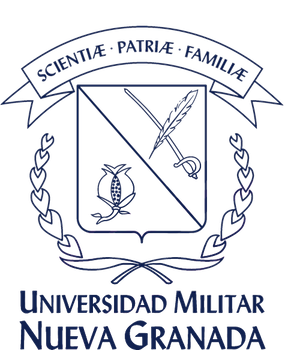Designing a learning objects recommendation system for repositories based on user's perception: The Rodas case.
Abstract
This paper describes a Learning Objects (LO) Recommendation System (RS) for repositories. The system is based on collaborative filtering using an adaptation of k-neighboring algorithm which is supported on user´s perception about usability and usefulness rather than downloading LO from repository. It also shows how the k-neighboring algorithm is adapted to user´s perception by implementing a voting system of LO. Finally, the RS validation using RODAS repository is given describing some pieces of algorithm and the computational model.
Downloads
Languages:
esReferences
Cobos, R., and Pifarré, M. (2008). Collaborative knowledge construction in the web supported by the KnowCat system. In: Computers & Education, Vol. 50, Issue 3, pp. 962-978. http://dx.doi.org/10.1016/j.compedu.2006.09.009
Caro, M. (2007). Proyecto RODAS, repositorio de objetos virtuales de aprendizaje. Informe proyecto de investigación. IUP-Espa-a.
IEEE, Learning Technology Standards Committee (LTSC). En: http://www.ieeeltsc.org ( Consulta: junio de 2011).
Vargo J., Nesbit J., and Belfer K. Archambault, (2003). A learning object evaluation: computer mediated collaboration and inter rater reliability. In: International Journal of Computers and Applications Vol. 25 (3).
Sicilia M. Sánchez, S. García, E. and Rodríguez D. (2009). Exploring structural prestige in learning object repositories: some insights from examining references in MERLOT. In: Intelligent Networking and Collaborative Systems, 2009. INCOS '09. International Conference, pp. 212-218. http://dx.doi.org/10.1109/incos.2009.12
Polsani, P. (2003). Use and abuse of reusable learning objects. In: Journal of Digital Information, Vol. 3, No 4.
Liu L., He G., Shi X., and Song H. (2007). Metadata extraction based on mutual information in digital libraries. Information Technologies and Applications in Education, 2007. ISITAE '07. In: First IEEE International Symposium, pp. 209-212. http://dx.doi.org/10.1109/ISITAE.2007.4409272
Morales E., García F., and Barrón Á. (2007). Key issues for learning objects evaluation. In: 9th International Conference on Enterprise Information Systems Funchal, Portugal.
Mize J., and Habermann R., (2010). Automating metadata for dynamic datasets. OCEANS 2010, pp. 1-6, 20-23. http://dx.doi.org/10.1109/oceans.2010.5663837
Fillmann C., Gluz J. and Vicari (2011). An agent-based federated Learning object search service. Interdisciplinary Journal of E-learning and Learning Objects. Issue: 7, pp. 37-54.
Gaviria J., Jiménez J., and Arevalo W. (2011). Building virtual learning objects that accomplish today CBR system requirements. In: Software Engineering: Methods, Modeling, and Teaching. Ed. Universidad de Medellín, pp. 125-141.
Maarof M., and Yahya Y. (2008). Learning object repositories interoperability using metadata (LORIUMET). In: Information Technology, 2008. ITSim 2008. International Symposium, vol.3, pp.1-5, 26-28 Aug. 2008.
Campus Alberta Repository of Educational Objects (2011). (en línea) http://careo.netera.ca/cgibin/WebObjects/Repository. (mayo de 2011).
Mygfl (2011). Grdi Pembelajaram Malaysia. En: http://www.mygfl.net.my (mayo de 2011).
Ilumina (2011). Educational Resources for Science and Mathematics. En: http://www.ilumina-dlib.org (Consulta: mayo de 2001).
Smete (2001). Smete Digital Library. En: http://www.smete.org/smete (Consulta: mayo de 2011).
Heal (2011). Health Education Assets Library. En: http://www.healcentral.org/index.jsp (Consulta: mayo de 2011).
Ariadne (2011). European Knowledge Pool System. En: http://www.ariadne-eu.org (Consulta: mayo de 2011).
Edna (2011). Educational Network Australia. En: http://www.edna.edu.au (Consulta: mayo de 2011).
Lydia (2011). Lydia Global Repository. En: http://www.lydialearn.com (Consulta: mayo de 2011).
Idea (2011). Interactive Dialogue with Educators froms Across the State. En: http://www.idea.wisconsin.edu (Consulta: mayo de 2011).
Bioe (2011). Banco Internacional de Objetos Educacionais. En: http://objetoeducacionais2.mec.gov.br (Consulta: mayo de 2011).
Cloe (2011). Cooperative Learning Object Exchange. En: http://cloe.on.ca/ (Consulta: abril de 2011).
Ruiz F., Díaz A., Chang H., and Echeverría F., (2006). Sistema de predicción y recomendación personalizada basada en ranqueo de ítems homogéneos usando filtrado colaborativo. In: ACM Communication.
Vallet D., Castells P., Fernández M., Mylonas P., and Avrithis Y. (2007). Personalised content retrieval in context using ontological knowledge. In: IEEE TCSVT, pág. 336-346.
Hua Tsai K., Kai Chiu T., Che Lee M., and I Wang T. (2006). A learning objects recommendation model based on the preference and ontological approaches. ICALT '06 Proceedings of the Sixth IEEE International Conference on Advanced Learning Technologies. Taiwan, pp. 36-40. http://dx.doi.org/10.1109/ICALT.2006.1652359
García, N., and Montoyo, A. (2008). Recomendación de objetos de aprendizaje almacenados en repositories lor@server según las preferencias del usuario. Departamento de Lenguajes y Sistemas, Universidad de Alicante, Espa-a.
Oviedo, G. (2004). La definición del concepto de percepción en psicología con base en la teoría de Gestalt. En: Revista de estudios sociales. No. 18, pp. 89-96.
Yen N., Shih T., Chao L., and Qun J. (2009). Ranking metrics and search guidance for learning object repository. In: IEEE transactions on Learning Technologies, Issue: 3, pp. 250 - 264.
Machado N., and Montoyo A. (2008). Recomendación de objetos de aprendizaje almacenados en repositorios lor@server según las preferencias del usuario. Memorias Conferencia Ibero-Americana en Ingeniería e Innovación Tecnológica: CIIIT 2009. Estados Unidos.
Morales E., Gil A., and García F. (2007) Arquitectura para la recuperación de objetos de aprendizaje de calidad en repositorios distribuidos. SHCA: Taller en Sistemas Hipermedia Colaborativos y Adaptativos; Actas de los Talleres de JISBD, pp. 31-38, Espa-a.
Gil A., and Garcia F., (2007). Un sistema multiagente de recuperación de objetos de aprendizaje con atributos de contexto. Memorias Conferencia de la Asociación Espa-ola para la Inteligencia Artificial - CAEPIA2007, Espa-a.
López G., Brise-o J., and Guadalupe M., (2007). Sistema INteractivo Distribuido de Repositorios de Objetos de Aprendizaje Matemático - SINDROME. Memorias Quinto Taller sobre Tecnología de Objetos de Aprendizaje. México.
Bell R., and Koren Y., (2007). Scalable collaborative filtering with jointly derived neighborhood interpolation weights. In Proc of. ICDM, 7th IEEE Int. Conf. on Data Mining, USA , pp. 43–52. http://dx.doi.org/10.1109/icdm.2007.90
Cheng R., and Chen L. (2009). Evaluating probability threshold k-Nearest-neighbor. In: IEEE TC on Data Engineering. USA.
Shakhnarovish D., (2005). Nearest neighbor methods in learning and vision. MIT Press. USA.
Rashid A., Karypis G., and Riedl J. (2006). Influence in ratings-based recommender systems: an algorithm-independent approach. In: Journal of the ACM.
Bregon A., Arancha C., and Rodríguez J. (2005). Un sistema de razonamiento basado en casos para la clasificación de fallos en sistemas dinámicos. Actas del III Taller Nacional de Minería de Datos y Aprendizaje, TAMIDA, pp. 203-211, Espa-a.
Ni K., and Nguyen Q. (2009). An adaptable -nearest neighbors algorithm for MMSE image interpolation. IEEE transactions on image processing, Vol. 18, No. 9. USA.http://dx.doi.org/10.1109/TIP.2009.2023706
Lathia N., Hailes S., and Capra L., (2009). Temporal recommendations with adaptive neighbourhoods. Computer Science Department - University College, London.
Bela G., Beel J., and Hentschel C., (2009). A research paper recommender system. Proceedings of the International Conference on Emerging Trends in Computing (ICETiC'09), Kamaraj College of Engineering and Technology India, IEEE, pp. 309–315, USA.
Lemire D., and Maclachlan A., (2005). One predictors for online rating based collaborative filtering. Secure Data Management - SDM05. Norway. http://dx.doi.org/10.1137/1.9781611972757.43












